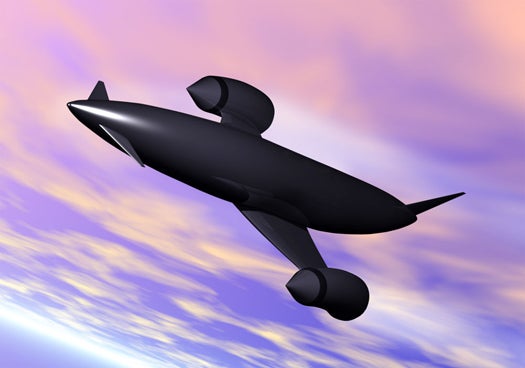Skylon Spaceplane Engine Endorsed By European Space Agency
The 'biggest breakthrough since the jet' could reach anywhere in the world in just four hours or power a spaceplane into orbit with no need for rocket stages.

The Skylon, a concept spaceplane that (theoretically) could go from a standing start to orbit and back without disposing of any rocket stages, took another big step forward today as tests independently audited by the European Space Agency confirmed that the Sabre engine underpinning it is conceptually sound. It’s the second key endorsement from the ESA that Skylon and the Sabre engine have picked up in the past two years–giving Sabre-maker Reaction Engines cause to call its technology the biggest engine breakthrough since the jet.
That’s big talk for a small aerospace firm, but then Skylon is a really big idea. The Sabre engine, if successful, should be able to double the normal top speed of conventional jet engines from 2.5 times the speed of sound to 5 times the speed of sound, and it should be able to do so using atmospheric air (rather than tanked oxygen, like a rocket). At that speed Skylon could climb to more than 15 miles up. Once up there amid the much thinner air, its hybrid propulsion system would switch to rocket mode to climb the rest of the way into space.
Other scramjet-style vehicles like the U.S. Air Force Waverider or DARPA’s HTV-2 have similarly used atmospheric air to generate huge amounts of thrust, but these vehicles have to be carried to very high speeds by either rockets or other aircraft before their powerful propulsion systems can engage. Sabre’s breakthrough is that it can (again, theoretically) flirt with hypersonic speeds after starting from a full stop on a conventional runway, without the need for multiple rocket stages or carrier aircraft.
How does it do this? Reaction surely isn’t saying. The company hasn’t even filed patents on its engine because it doesn’t want to share its secrets, so novel is the technology. But we do know that the main obstacle in this kind of engine design is in heat exchange. Super fast-moving air being sucked into the engine has to be compressed before the combustion stage, and that compression can push the air to more than 1,800 degrees in temperature–hot enough to melt engine components. So the air must be cooled and cooled quickly, in just one hundredth of a second. Moreover, this has to be done without causing any frost to form in the air, which would also gum up the engine and cause it to malfunction. Somehow, Sabre has achieved this and demonstrated to the ESA that it can scale this technology to a working jet/rocket hybrid engine that could carry Skylon to orbit.
If it flies, and the ESA seems to think it could, it would become the first engine to launch a vehicle to space in a single stage and would seriously pave the way for regular flights into orbit aboard a reusable space plane as the cost-per-kilogram for payloads would be drastically diminished. It’s important to keep in mind that Skylon still only exists on paper (where it has been for nearly three decades), but with this latest independent endorsement Reaction may pick up the funding and confidence it needs to change that.